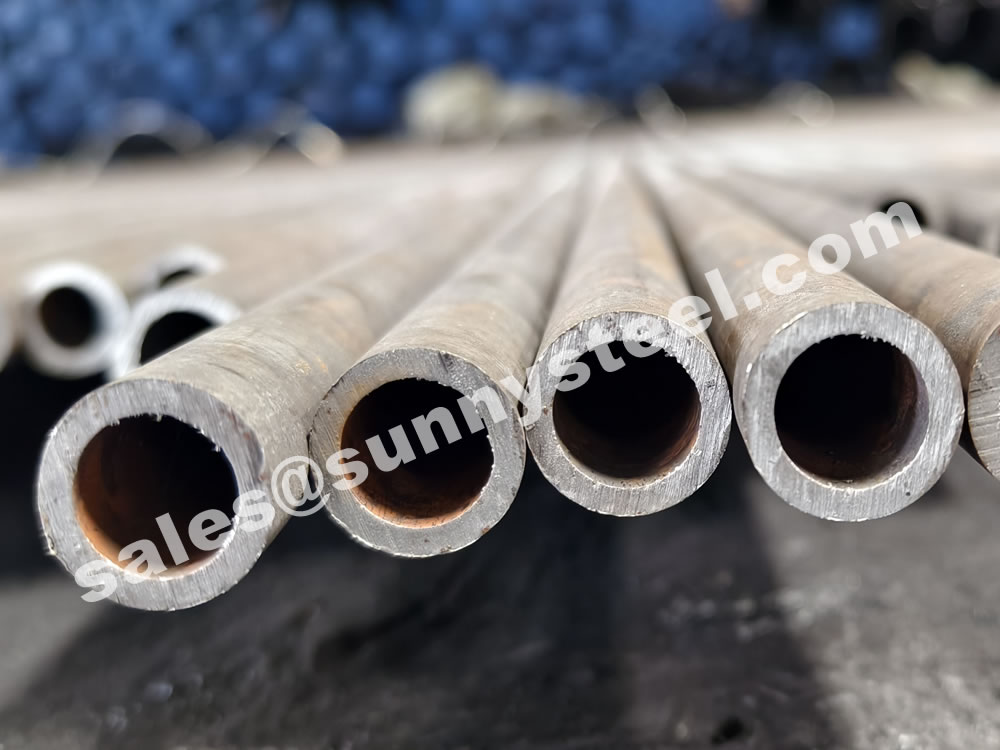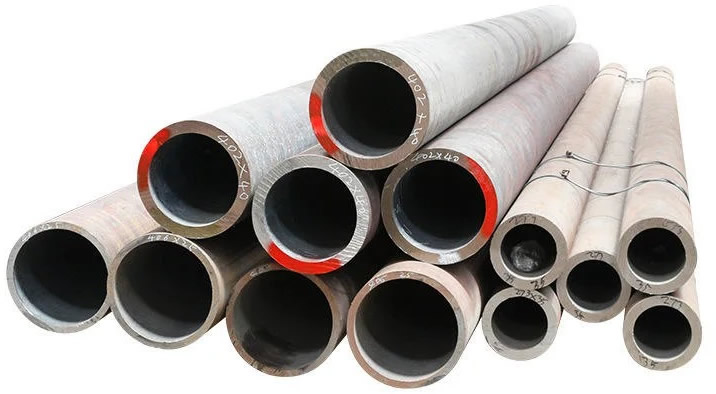15CrMoG
High-quality 15CrMoG material, suitable for high-pressure environments.

15CrMo boiler tubes are based on high quality carbon structural steel to which one or more alloying elements are added as appropriate to improve the mechanical properties, toughness and hardenability of the steel.
12Cr5MoI seamless steel tube is a type of steel tubing that is made from the 12Cr5MoI alloy, which is a low-alloy high-strength structural steel. This type of steel is known for its excellent mechanical properties, including high strength, good toughness, and wear resistance.
The 15CrMo boiler tube is a type of seamless steel tube used primarily in the construction of boilers, superheaters, and pressure vessels due to its high-temperature strength and resistance to oxidation and corrosion.
| Element | Content (%) |
|---|---|
| Carbon (C) | 0.12 - 0.18 |
| Silicon (Si) | 0.17 - 0.37 |
| Manganese (Mn) | 0.40 - 0.70 |
| Chromium (Cr) | 0.80 - 1.10 |
| Molybdenum (Mo) | 0.25 - 0.35 |
| Phosphorus (P) | ≤ 0.035 |
| Sulfur (S) | ≤ 0.035 |
| Property | Value |
|---|---|
| Tensile Strength | ≥ 440 MPa |
| Yield Strength | ≥ 235 MPa |
| Elongation | ≥ 21% |
| Impact Energy (J) | ≥ 31 |
| Hardness (HB) | ≤ 179 |

The two digits at the beginning of the steel number indicate the carbon content of the steel, expressed in ten-thousandths of the average carbon content. Example: 40Cr indicates approximately 0.40% carbon content.
Main alloying elements are expressed in percent. If the content is less than 1.5%, only the element symbol is indicated. Example: 12CrMoV (0.4-0.6% Cr) vs. 12Cr1MoV (0.9-1.2% Cr). For contents ≥1.5%, the element symbol is followed by numbers: Example: 18Cr2Ni4WA.
Elements such as V, Ti, Al, B, and RE are marked even when their content is very low. Example: 20MnVB (0.07-0.12% V, 0.001-0.005% B).
High-quality steel is marked with an "A" at the end of the steel number to distinguish it from general quality steel.
Steel for special purposes may have a prefix or suffix indicating its application. Example: ML30CrMnSi for riveting screws.
Alloy tubes and seamless tubes have both similarities and differences and should not be confused. The alloy pipe is defined by the steel pipe according to the production materials (i.e. the material), as the name suggests, it is a pipe made of alloy; while the seamless pipe is defined by the steel pipe according to the production process (seamless), which is different from the seamless pipe. Seam welded tubes, including straight seam welded tubes and spiral tubes.
